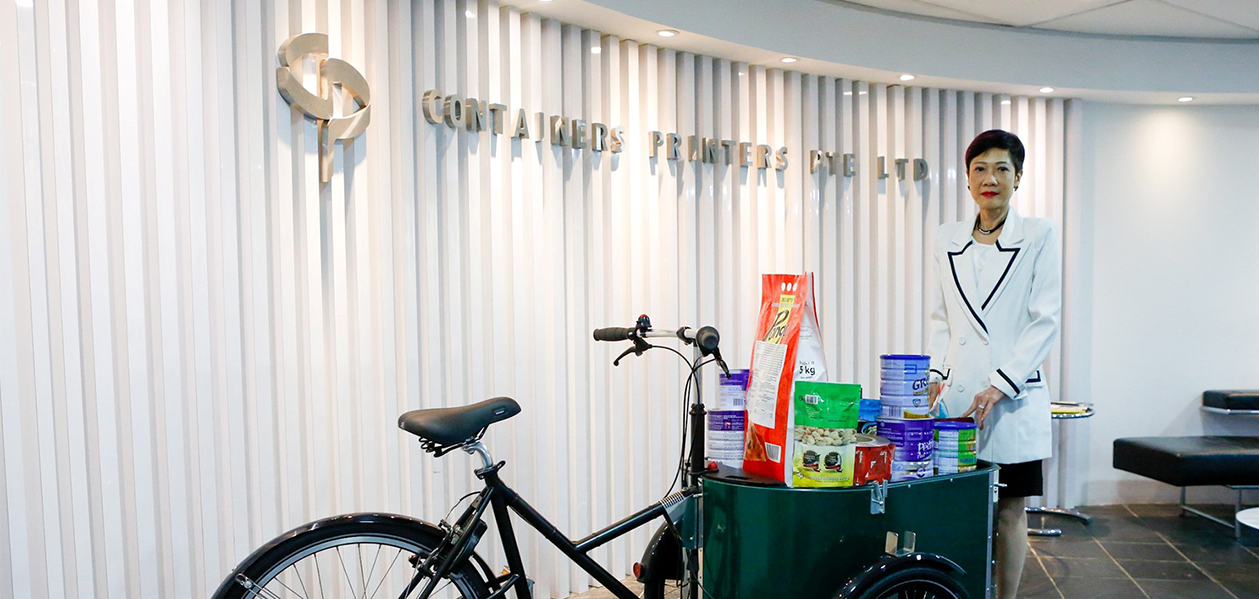Keeping up with the consumers
With almost four decades of open innovation under their belt, Containers Printers has successfully enhanced their products through collaboration with contacts in and outside of Singapore.
An oddly specific but surprisingly common occurrence in households across the world is the childhood folly of cracking into a Danish cookie tin, expecting to find delicious buttery goodness only to be greeted by a sewing kit. In use before the concept of sustainable packaging was popular among consumers, those tricky cookie tins are a perfect example of packaging that can be easily repurposed instead of thrown away.
Packaging producers since the early 80’s, Containers Printers are experts at what they do. Their first product remains their most recognisable—square metal tins for cooking oil, common throughout Southeast Asia. Despite their time and experience in the industry, Containers Printers are not stuck in their ways and remain open to innovation, collaboration and change. These three values have allowed them to keep up with what their clients need – sustainable packaging.
Just last year, Singapore generated about 7.23 million tonnes of solid waste. The good news is, more than half of that was recycled, about 4.25 million tonnes. Slowly but surely, we are on our way to becoming a Zero Waste Nation—a goal that is mirrored by the shopping habits of consumers. Globally, over 60% of consumers believe brands should do more to protect the environment and adjust their shopping to support that belief.
Containers Printers is now pivoting their business to accommodate the need to go green, by looking at ways to produce sustainable packaging solutions for their clients. They have turned to their network of research institutions and industry partners to provide a path to recyclable and biodegradable packaging wherever possible.
Containers Printers CEO Amy Chung, shares the benefits of open innovation and how they harness collaboration and constant learning to help clients keep pace with consumers’ needs.
1. What is the core competency of Containers Printers?
Our core competency is in the provision of printing and packaging solutions that address clients’ pain points while complying with global regulations and providing dependable export services across the globe.
2. Was there a turning point in Containers Printers’ history that convinced you that open innovation was the right way to go?
It was probably around 2015 that we decided to use open innovation as a model to enhance existing products and services, or to create new ones. As business challenges and consumers became more demanding, we felt that open innovation would be a good way to leverage our existing capabilities and resources to achieve more efficient product and process development.
3. How has open innovation benefitted Containers Printers in the food and medical industries, both locally and abroad?
The open innovation model of collaborating with strategic partners has allowed us to create both track and trace solutions as well as sustainable packaging solutions that are targeted at the food and medical industries. On top of pressing concerns for the safety of their products, these industries are also trying to keep up with consumers’ increasing preference for products and brands with sustainability goals.
4. How have you encouraged a culture of open innovation while maintaining digital and sustainable practices in Containers Printers over the last 39 years?
It is only when the project-based teams have experienced positive results from the collaboration that such a corporate culture can be developed over time. Undoubtedly, top management’s consistent commitment is also needed to sustain a culture of open innovation.
5. What are some lessons that you have learnt in the process of engaging in open innovation that would be helpful for SMEs and start-ups which are just embarking on their journey?
Before embarking on their open innovation journey, the company must identify the type of technology, product or service that they would like to enhance or create by the end of the collaboration. There are a lot of potential partners but you can select the most appropriate one if you know what your needs are. There will be a lot of sharing and exchanging of information during the collaboration period, so all parties must be willing to cooperate. It’s also important to acknowledge that at the start there may not be any realisable commercial benefits immediately after collaborating. The company must be willing to invest despite having no assurance of commercialisation upon project completion.
6. How has IPI enhanced Containers Printers’ open innovation journey?
IPI has been very important—not only by providing leads of potential partners but also by acting as a facilitator. Their assistance enabled us to enlarge our ecosystem of contacts beyond the shores of Singapore and gain further insights of the market and technology.

